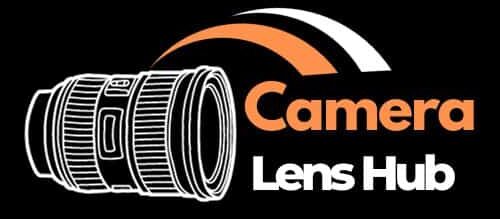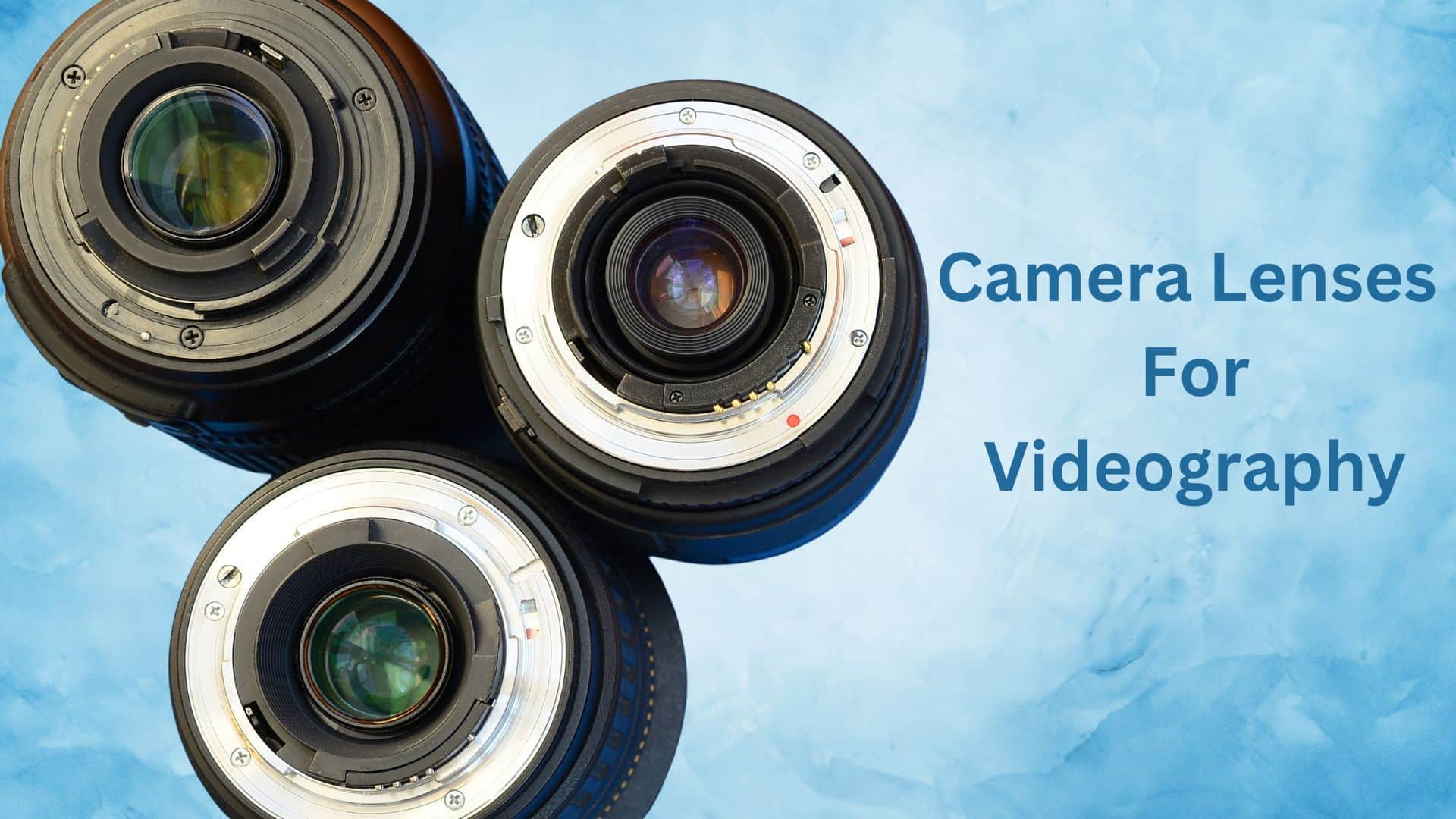When it comes to shooting high-quality video, your camera lens selection is just as important as the camera body itself. While cameras continue to improve in resolution and dynamic range, the glass in front of the sensor will ultimately determine things like depth of field control, sharpness, contrast, flare resistance, and overall image quality. In this guide, we’ll explore some of the best camera lenses for videography. Whether you’re a professional videographer, YouTuber, or hobbyist, these lens choices will take your video to the next level.
Best Camera Lenses For Videography
1. Canon EF 24-70mm f/2.8L II USM
No lens roundup would be complete without mentioning the legendary Canon 24-70mm f/2.8L. As one of the best all-around zoom lenses ever made, it’s a favourite of filmmakers for both stills and video. With a constant f/2.8 maximum aperture throughout the zoom range, it gathers lots of light to shine even in low-light conditions.
The Mark II version improves on its predecessor with significantly reduced chromatic aberration and improved macro capability. It’s also dust and weather-sealed for reliability. At around $2,200 it’s not cheap, but its image quality and functionality make it worth the investment for any Canon shooter. (200 words)
With beautiful bokeh, sharp optics from corner to corner, and Canon’s top-tier L series build quality, this lens is many filmmakers’ zoom of choice for documentary, event coverage, and narrative work on APS-C and full-frame Canon cameras. The constant f/2.8 aperture combined with Canon’s Dual Pixel CMOS AF means smooth, fast, and near-silent autofocus for both stills and video.
2. Sony FE 24-70mm f/2.8 GM
For Sony full-frame mirrorless shooters, the new FE 24-70mm f/2.8 GM sets the standard. It’s the first pro-level full-frame zoom from Sony and delivers exceptional results. tack-sharp across the frame even when shooting wide open, with virtually no distortion, flare, or chromatic aberration.
The GM designation means this is Sony’s top optical formula, already proven through prime lenses like the legendary 55mm f/1.8. Coupled with Sony’s excellent AF system, it’s capable of smooth, fast, and near-silent autofocus perfect for both run and gun documentary work or big-budget narrative productions. Weather sealing and sturdy build quality also make it a reliable field companion.
At $2,200 it matches the Canon L lens in price but may be worth it for the slight size and weight savings compared to Sony’s EF adapter and third-party lenses. Either way, it’s a great standard zoom for Sony’s high-resolution full-frame A7 III, A7R IV, and FX3 cameras.
3. Sigma 18-35mm f/1.8 DC HSM Art
For independent films and documentaries where available light often rules, the Sigma 18-35mm f/1.8 DC HSM stands out as an affordable wide-angle zoom with a massive maximum aperture. At a mere $999 it’s less than half the price of the top Canon/Sony Pro zooms while offering truly cinematic dimensions.
Its wide-open constant f/1.8 aperture means you can isolate subjects with attractive foreground bokeh even in low-light scenarios. Optical quality is top-notch with sharp results from corner to corner. And for gimbals, sliders, and shots requiring smaller camera modules, the comparatively compact construction is a huge bonus. Only the lack of stabilization may hold it back for run and gun handheld work.
Overall it’s a budget dream lens for narrative filmmakers on APS-C or full-frame cameras looking for a lightweight yet light-gathering wide-angle zoom. The image quality punches above its price class.
4. Tokina Cinema ATX 11-20mm T2.9

One of the best camera lenses for videography on APS-C mirrorless mounts is Tokina’s ATX 11-20mm T2.9 cinema lens. Specifically designed for video, it features geared focus and aperture rings for precise adjustments, as well as standardized gearing and mount sizes to work with follow focus and matte boxes.
Image quality is top-notch with minimal distortion, flares, or chromatic aberration across the zoom and aperture range. Its T2.9 maximum brightness throughout means ample light for shooting even expansive landscapes and interiors. Build quality is solid and weather sealing protects it for outdoor work or run-and-gun documentary use.
At around $950 it’s not cheap compared to photo lenses, but the investment yields true cinematic dimensions and quality for APS-C systems like Canon M50, Sony A6X00, and others. A great choice for independent films valuing versatility, dynamic range, and focus control.
5. Panasonic Lumix S Pro 24-70mm f/2.8
For Panasonic Lumix S1H and S1 shooters, the Lumix S Pro 24-70mm f/2.8 zoom extends the line of pro-grade L-Mount cine/photo lenses. With a constant f/2.8 aperture throughout the 24-70mm standard zoom range, it gathers ample light for both stills and video applications.
Optical quality is top tier with sharp results even at maximum aperture, alongside minimized aberrations, flaring, and distortion. The mechanical iFocus drive enables buttery smooth focus control, while weather sealing makes it durable for outdoor documentary or film work. Its L-Mount standardizes gearing for use with matte boxes and follows focus systems too.
Panasonic’s excellent Dual IS image stabilization further expands shooting versatility. At around $2,500 it’s not cheap, but the quality, build, and imaging characteristics make it worth the investment for cinema shooting on Panasonic’s high-resolution 6K S1H—a true do-it-all zoom for video and stills alike.
6. Nikon AF-S NIKKOR 50mm f/1.8G
No lens roundup would be complete without a standard “nifty fifty” prime. For Nikon shooters, the AF-S 50mm f/1.8G lens distinguishes itself not just with sharp optics at a great value price, but its suitability for both photo and video applications too.
With a wide f/1.8 maximum aperture, it delivers beautiful subject isolation and backgrounds even in dim lighting scenarios. Autofocus is fast and near-silent on modern Nikon DSLRs, complementing run-and-gun documentary work. Build quality exceeds its ultra-affordable $200 price tag too.
In video mode, the ability to smoothly adjust the aperture and manual focus using the lens rings yields true cinematic control. Image quality is tack sharp across the frame even when shooting wide open. Only the lack of optical stabilization holds it back for strict handheld work.
Overall for the price, it’s a must-have prime that performs admirably for photos and video applications on DX and FX format Nikon cameras. Truly a versatile companion.
Factors To Consider
Here are some additional key factors to consider when choosing the best camera lenses for videography:
- Sensor size – Lens performance and characteristics will vary depending on if it’s designed for full-frame, APS-C, or other sensor sizes. Wider focal lengths are needed for smaller sensors.
- Mount type – Match your lens to the camera system whether it’s Canon EF, Nikon F, Sony E, Fuji X, MFT, or others. Consider long-term system compatibility.
- Autofocus – Reliable, smooth, and quiet autofocus is ideal for most run-and-gun video workflows. Check lens AF motor type and focus speed.
- Aperture range – Constant or near-constant maximum apertures allow more light gathering and shallow depth of field effects.
- Image stabilization – Especially critical for handheld shots. In-lens (OIS) or body-based (IBIS) options can reduce shake by 4-5 stops.
- Zoom range – Check minimum and maximum focal lengths versus your common shooting needs and environments.
- Special features – Built-in ND filters, geared rings, weather sealing, and lens construction impact usability.
- Budget – Pricing often reflects quality but cheaper options still excel. Consider investments wisely.
- Third-party support – Lenses from Tamron, Sigma, and others often undercut major brands in pricing and performance.
- Lens size and weight – Portability matters, especially for run-and-gun documentary work. Consider balance with bodies too.
Balancing these factors with your specific video needs will ensure selecting exactly the right lens tools. Rent before you commit to buy if possible as well.
Conclusion
In conclusion, choosing the right best camera lens for videography is a critical decision that impacts the overall quality of your video production. While this blog post covered some of the current top options available, the lens ecosystem continues to evolve rapidly with new innovative options coming to market regularly. Your specific needs like aperture requirements, focal length desires, budget constraints, camera system compatibility, and shooting styles should all factor into your lens selection.
Do your research on sample footage and reviews, and if possible, handle the lenses yourself before committing to a purchase. Renting is also a great way to test drive options before dropping serious cash. Above all, find lenses that inspire you creatively and enable you to reliably capture the shots you envision. With the right glass and shooting discipline, even entry-level camera bodies are capable of producing cinematic results. Keep practising your craft and having fun experimenting with different lenses to evolve your filmmaking skills and visual storytelling style over time.






